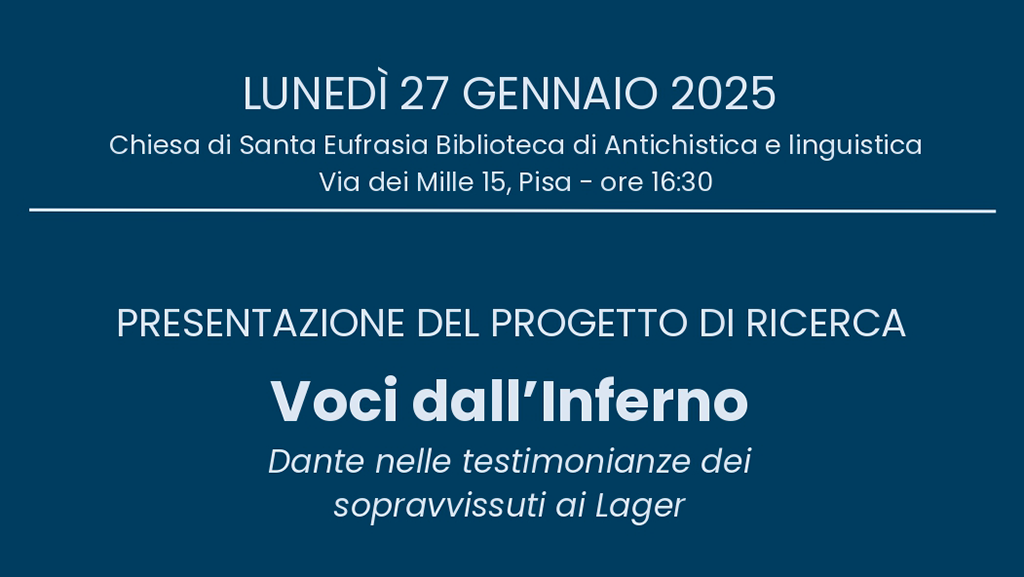In occasione della Giornata della Memoria 2025, il CISE promuove l’incontro di presentazione del progetto Voci dall’Inferno. Dante nelle testimonianze dei sopravvissuti ai Lager – responsabile scientifico: Marina Riccucci (CISE), in collaborazione con Angelo Del Grosso (CNR), Monica Monachini (CNR), Anna Segre (autrice del volume Judenrampe), Laura Brazzo (CDEC), Alberto Casadei (LIDUP).
Il progetto nasce nel 2018: in questi anni si è avvalso della collaborazione di tanti studenti e di tante studentesse dei corsi di laurea triennale e magistrale dei dipartimenti umanistici dell’Università di Pisa e oggi conta sulla fattiva collaborazione con il CNR, con AIUCD, con il CDEC e con molti studiosi italiani e stranieri. Molte sono le testimonianze che dal 2018 sono state letteralmente scoperte: voci di ex-deportati nei campi di sterminio ancora inedite e che il progetto tutela, conserva e studia. Dal 2021 Voci dall’Inferno è una ‘voce’ degli eventi legati al Giorno della Memoria: nelle scuole, presso le istituzioni, presso le Università.
The Project
In Nazi concentration camps, approximately 20 million people perished. This included young and old, men and women, Jews, dissidents, and homosexuals. Only 10% of those deported survived. “Voci dall’Inferno” project, which aims to achieve two key objectives: a) Create a comprehensive digital archive: by encoding a corpus of non-literary testimonies including both written and oral sources. b) Analyze the use of Dante’s language: by identifying the presence of Dante’s lexicon and allusions. Currently, the project holds 47 testimonies, with 29 transcribed in full text and 18 encoded using the XML-TEI format. This project is propelled by a multidisciplinary and educational context with experts in humanities and computer science. The project’s findings will be disseminated through a user-friendly web application built on an XML foundation. Though currently in its prototyping phase, the application boasts several features, including a search engine for testimonies, terms, or phrases within the corpus. Additionally, a browsing interface allows users to read and listen the original testimonies, while a visualization tool enables deeper exploration of the corpus’s content. Adhering to the Text Encoding Initiative (TEI) guidelines, the project ensures a structured digital archive, aligned with the FAIR principles for data accessibility and reusability.


